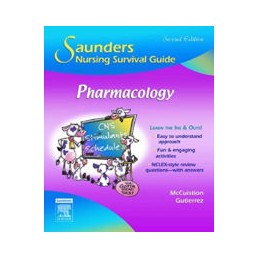Description
Saunders Nursing Survival Guide:: Pharmacology is a study and review aid that provides students with additional information on this extensive and especially difficult subject area. This guide offers a visual, interactive approach that clearly explains topics such as drug pharmacodynamics, pharmacotherapeutics, and pharmacokinetics. Visual cues help the student retain the information by expressing the material in a fun, engaging manner with activities created to appeal to students of different learning styles. NCLEX® Review questions follow the end of each chapter to help check the students understanding of key topics and to perform necessary review.
Product Details
Reference
36163
EAN13
9781416029359
ISBN
9781416029359
Data sheet
Publication date
2006
Issue number
2
Cover
paperback
Pages count
688
Dimensions (mm)
191 x 235
Weight (g)
1030
Chapter 1: Drug Concepts Chapter 2: Drugs Used to Treat Infections Chapter 3: Drugs Used to Alter Immune Function Chapter 4: Drugs Used to Treat Nervous System Disorders Chapter 5: Drugs Used to Treat Neuropsychiatric Disorders Chapter 6: Drugs Used to Treat Hematologic System Disorders Chapter 7: Drugs Used to Treat Cardiovascular Disorders Chapter 8: Drugs Used to Treat Respiratory System Disorders Chapter 9: Drugs Used to Treat Endocrine System Disorders Chapter 10: Drugs Used to Treat Gastrointestinal System Disorders Chapter 11: Drugs Used to Treat the Genitourinary Tract and Renal Disorders Chapter 12: Drugs Used to Treat Reproductive System Alterations Chapter 13: Drugs Used to Treat Musculoskeletal System Disorders Chapter 14: Drugs Used to Treat Sensory System Alterations Chapter 15: Drugs Used for Pain Relief Chapter 16: Drugs Used for Nutritional Imbalances




 Delivery policy
Delivery policy
 Security policy
Security policy
 Return policy
Return policy
